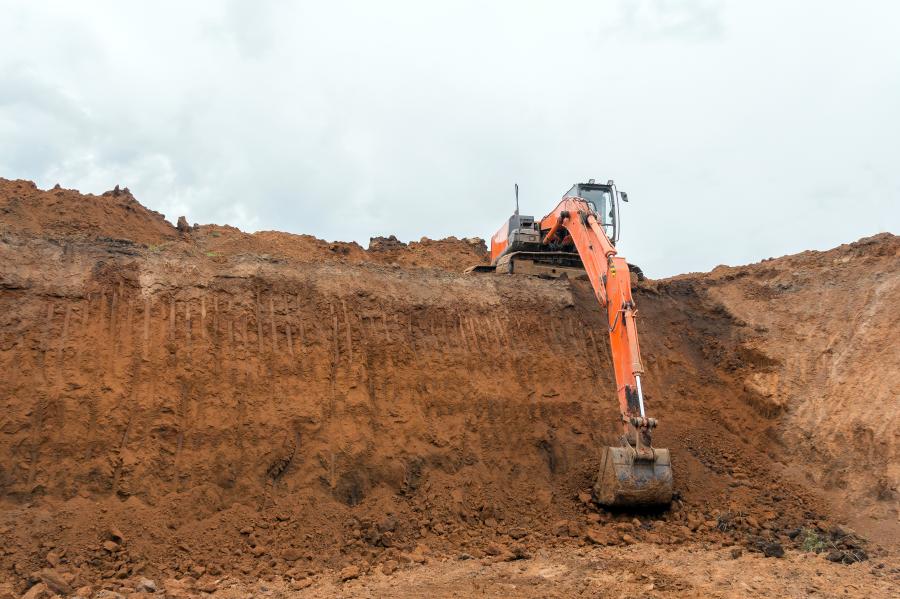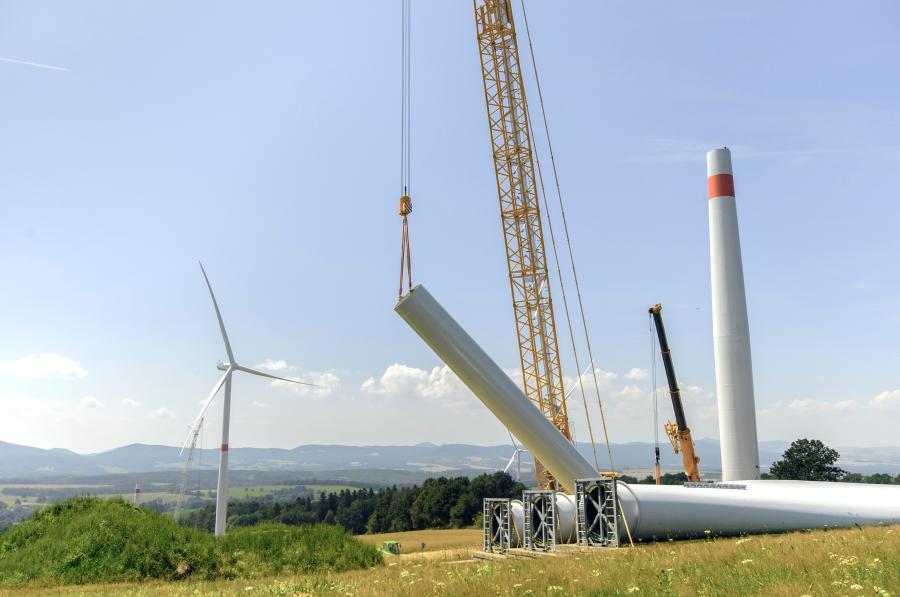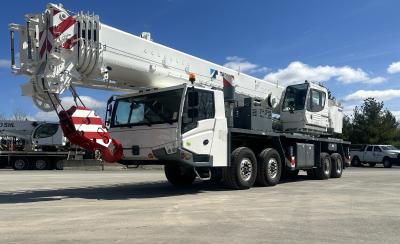Investment in construction equipment and software will surpass $2 trillion in 2023, according to the Equipment Leasing Finance Association.
With the bipartisan IIJA committing hundreds of billions to fund infrastructure projects over the next five years, now is the time for contractors to assess off-road fleets and start shopping for machine upgrades. Technology that checks boxes for economy, ecology and efficiency continues to dictate equipment acquisitions in 2023.
The Equipment Leasing Finance Association (ELFA) has released its list of acquisition trends for this year. The association said investment in equipment and software will be more than $2 trillion this year, much of it financed.
"Slower economic growth underlies the trends this year," said Ralph Petta, ELFA president. "Equipment acquisition continues to drive supply chains across all U.S. manufacturing and service sectors."
Though the association forecasts "sluggish growth" this year, it views as "a solid jumping-off point for 2023" the 12-percent annualized growth in capital spending last year.
"Rising interest rates, high inflation and other economic uncertainties are expected to weigh on investment," ELFA reported.
The association predicts 4.2 percent growth in equipment and software investment this year. Tighter financial conditions are foreseen as well. "Interest-rate levels are expected to rise above 5 percent this year."
That number has the potential to go higher as the federal government fights inflation.
"Even if rate increases slow down or pause later in the year, the Fed's shrinking balance sheet will contribute to tighter financial conditions," said ELFA.
Paying for Those Purchases
At 55 percent, the majority of equipment acquired will be financed, the association maintains.
"Protection from equipment obsolescence, tax advantages and cash-flow optimization will be the top drivers for end users to finance."
As a result, contractors will turn to automation and technology to offset labor costs this year.
"Additional benefits will be increased economic productivity and downward pressure on inflation in the long term," said ELFA.
Supply-chain backlogs will ease up, opening doors for equipment acquisitions. Because those backlogs have returned to their historical averages, said ELFA, delivery delays or shortages will improve.
"A combination of cooling demand and improving public health have given suppliers a chance to catch up," the association said. "In addition, global supply-chain disruptions have triggered a paradigm shift."
Many large organizations are "near-shorting" or "re-shoring" elements of their supply chains, in fact. The slow-growth economy will have many categories of equipment thriving, said ELFA, as residual pandemic effects will spur demand.
Post-pandemic hybrid work arrangements will dictate the acquisition of office equipment, computers, software and communications technology. And the trending commitment by companies to cut greenhouse gases will grow demand for green projects. That means construction of wind turbines, solar energy systems, microgrids and battery storage facilities will grow.
The five-year distribution program for the legislation passed by Congress will boost demand for off-road equipment. Globally, an estimated $18 trillion of climate-focused equipment is forecast to be financed between now and 2030, according to ELFA.
"If you are thinking about developing or enhancing your fleet sustainability management strategy, this is the year," said Tony Lourakis, of Fleet Complete.
"Working toward a greener fleet is something your competitors are most likely already looking into or have adopted," added the telematics company CEO.
Technology Is King
The Association of Equipment Distributors (AED) has formed a trends list of its own. Construction fleets this year will be most affected by technology.
Online sales and rentals, vehicle electrification, connected job sites, parts and equipment rental in particular will be front and center.
"Whatever happens in the auto industry is coming to construction equipment dealerships," said Garry Bartecki, Illini High Reach CFO, commenting on the growing trend in online sales of automobiles, which reached 30 percent of the market two years ago.
Back then, dealers said in a survey they believed it was likely that OEMS will implement a direct-to-consumer model in five years.
"They expect fully digital sales — including the actual purchase — for new equipment to increase from 7 percent to 29 percent," noted the AED survey.
Digital rentals were expected to increase from 7 percent to 33 percent within that same timeframe.
"We definitely see things moving in this direction," said Jefferson Yin, director of new business models of Volvo Construction Equipment.
The global off-highway electric vehicle (EV) market size is expected to reach $42 billion by 2030, according to AED. That growth will be driven by lower operating costs as well as improved technology and lower costs for batteries.
Verizon Connect found that only 17 percent of respondents to its 2023 Fleet Technology Trends Survey use EVs. The majority of those respondents said EVs were only a small part of their fleet makeup.
"A major barrier to EV adoption for many is a lack of charging infrastructure," reported Verizon Connect. "Even though [contractors] may have found EVs desirable, without charging stations along their routes it simply wasn't feasible."
However, the bipartisan infrastructure act has earmarked funds for a national EV charging infrastructure.
"It will take time for this infrastructure to be built out, but now is the time to start planning," advised Verizon. "It's important for fleets to take a thoughtful approach to EV adoption. Fleet technology can help."
GPS fleet tracking software can help fleet managers determine which vehicles should be replaced with EVs. The technology can aid in developing an optimized EV charging strategy and comparing costs between EVs and other vehicles. The technology also can optimize routing as equipment owners and contractors add EVs to their fleets.
Steve Clegg, owner of business development firm Winsby Inc., believes the industry will see a switch to battery or hybrid machines.
"The amount of parts drops by about 90 percent, so if your operating costs for a skid steer were $20 an hour, that drops to $3 per hour," he said.
Electric machines will cut the maintenance costs. "It's a whole new ball game," said Bartecki of Illini High Reach.
As a result, construction equipment dealerships will add new services as revenue sources. Support and servicing of batteries and providing services including recharging vehicles, tires, wear parts and repair are examples that Clegg cited.
To support the job site, nearly all new construction equipment machinery is now equipped with technology that prevents downtime, notes AED.
The challenge, according to the organization, has been getting equipment owners and contractors on board.
"The machines need to be able to talk to each other as they do in other industries," said Ron Slee, managing director of Learning Without Scars.
This year, asset tracking emerged as the technology to see the highest percentage increase of new users, according to Verizon Connect. The number of respondents to the organization's trends survey who are using the technology jumped to 29 percent this year.
"And 96 percent of those users found it beneficial," reported Verizon Connect.
In addition to tracking off-road machinery location, GPS technology can provide valuable preventive maintenance data. It helps fleet managers and equipment owners meet productivity, utilization and security goals.
Survey respondents reported improvements in both equipment/trailer utilization and driver efficiency and productivity. Better equipment security and back-office staff productivity were reported as well.
Drivers will use their mobile devices to pay at fueling and charging stations, predicted Tony Lourakas, of Fleet Complete.
"Digital transformation enables fleet managers to track driver vehicle inspections without paper," said the telematics provider CEO. "Drivers can use assigned key fobs, RFID cards, barcodes, cameras or other authentication methods to increase productivity."
"Try It Before You Buy It" Game
The upward path of the equipment rental market is expected to continue, according to the American Rental Association (ARA).
Construction equipment rental revenue was expected to surpass $41.6 billion last year. The notion of equipment-as-a-service, which transfers responsibility onto the manufacturer or dealer, is favored by contractors.
These customers like the freedom to focus on business. "It might involve an entire fleet to be provided for several years," said AED.
There would at the same time be the potential to tie invoicing directly to utilization by the contractor or owner.
"Contractors use the machine to dig a hole. They are only interested in the hole, and they look at the equipment merely as an operating cost," said Slee.
"One of the most positive aspects is the payment flexibility, since it's usually linked to machine utilization," said Ray Gallant, Volvo CE vice president of product management.
It Takes Total Commitment
Contractors will have to monitor other "wild-card" issues affecting equipment acquisition. Tightening credit, the federal debt-ceiling debate and energy prices could impact businesses.
But many in the construction sector are positive about the asset management side of things.
"This year will be full of new opportunities for fleet managers to drive greater efficiencies, increase fleet safety and reduce operating costs," said Lourakas. "As businesses face interest-rate increases and the possibility of an economic recession, these benefits can help fleets realize cost savings and ROI benefits."
In the end, fleet optimization and equipment acquisitions to guarantee that optimization come down to a team effort.
"It requires that the OEM, dealer and customer are aligned so the fleet performs accordingly and delivers the expected results," said Gallant. CEG
Today's top stories























